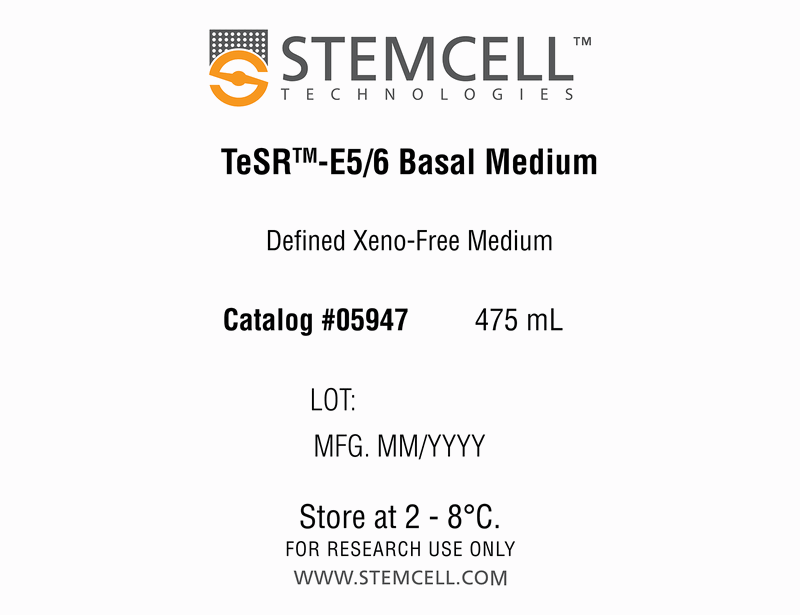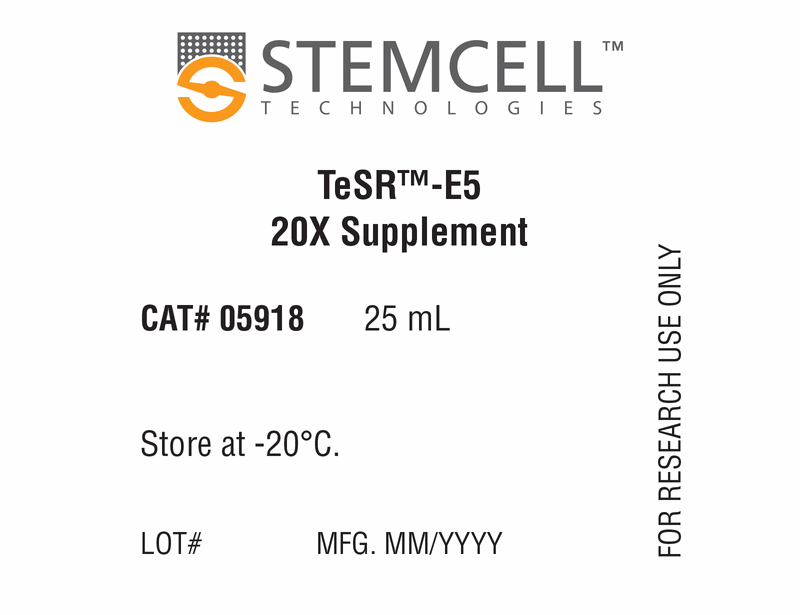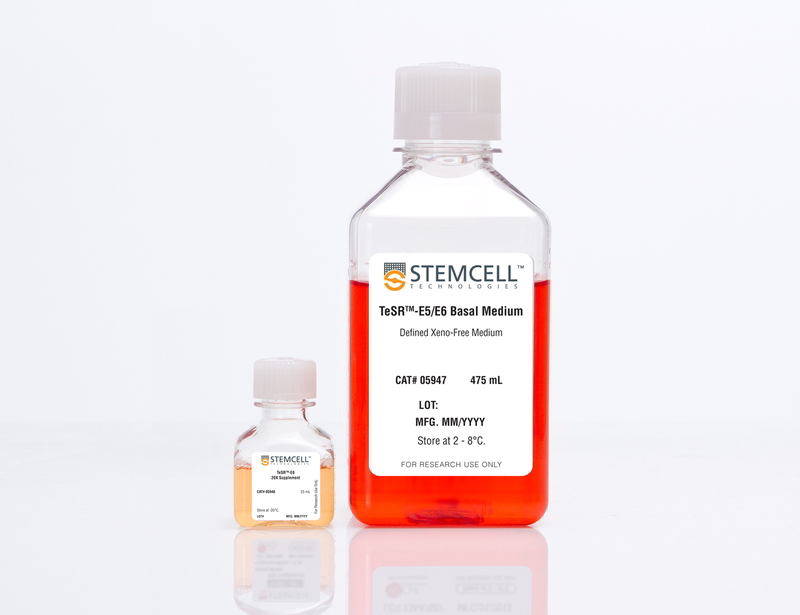TeSR™-E5
Defined, serum-free, xeno-free medium for pluripotent stem cells
概要
TeSR™-E5 is a defined, serum- and xeno-free medium that is based on the formulation of TeSR™-E8™, but does not contain transforming growth factor β (TGF-β), basic fibroblast growth factor (bFGF) or insulin. It may be used as a basal medium for differentiation of human embryonic stem (ES) cells and induced pluripotent stem (iPS) cells, or other applications where removal of the above cytokines and insulin is desirable.
Components
- TeSR™-E5/ E6 Basal Medium, 475 mL
- TeSR™-E5 20X Supplement, 25 mL
Subtype
Specialized Media
Cell Type
Pluripotent Stem Cells
Species
Human
Application
Cell Culture, Characterization, Differentiation
Brand
TeSR
Area of Interest
Drug Discovery and Toxicity Testing, Stem Cell Biology
Formulation
Serum-Free, Xeno-Free
技术资料
| Document Type | 产品名称 | Catalog # | Lot # | 语言 |
|---|---|---|---|---|
| Product Information Sheet | TeSR™-E5 | 05916 | All | English |
| Safety Data Sheet 1 | TeSR™-E5 | 05916 | All | English |
| Safety Data Sheet 2 | TeSR™-E5 | 05916 | All | English |
| Safety Data Sheet 3 | TeSR™-E5 | 05916 | All | English |
数据及文献
Publications (1)
Stem cells and development 2015 APR
Increased culture density is linked to decelerated proliferation, prolonged G1 phase, and enhanced propensity for differentiation of self-renewing human pluripotent stem cells.
Abstract
Abstract
Human pluripotent stem cells (hPSCs) display a very short G1 phase and rapid proliferation kinetics. Regulation of the cell cycle, which is linked to pluripotency and differentiation, is dependent on the stem cell environment, particularly on culture density. This link has been so far empirical and central to disparities in the growth rates and fractions of self-renewing hPSCs residing in different cycle phases. In this study, hPSC cycle progression in conjunction with proliferation and differentiation were comprehensively investigated for different culture densities. Cell proliferation decelerated significantly at densities beyond 50×10(4) cells/cm(2). Correspondingly, the G1 fraction increased from 25% up to 60% at densities greater than 40×10(4) cells/cm(2) while still hPSC pluripotency marker expression was maintained. In parallel, expression of the cycle inhibitor CDKN1A (p21) was increased, while that of p27 and p53 did not change significantly. After 4 days of culture in an unconditioned medium, greater heterogeneity was noted in the differentiation outcomes and was limited by reducing the density variation. A quantitative model was constructed for self-renewing and differentiating hPSC ensembles to gain a better understanding of the link between culture density, cycle progression, and stem cell state. Results for multiple hPSC lines and medium types corroborated experimental findings. Media commonly used for maintenance of self-renewing hPSCs exhibited the slowest kinetics of induction of differentiation (kdiff), while BMP4 supplementation led to 14-fold higher kdiff values. Spontaneous differentiation in a growth factor-free medium exhibited the largest variation in outcomes at different densities. In conjunction with the quantitative framework, our findings will facilitate rationalizing the selection of cultivation conditions for the generation of stem cell therapeutics.



